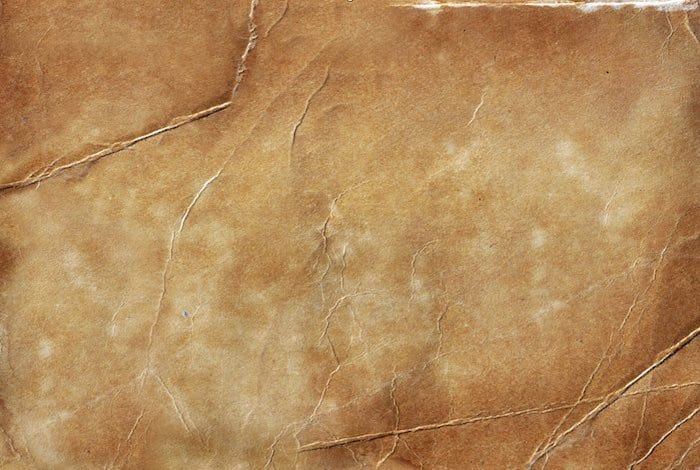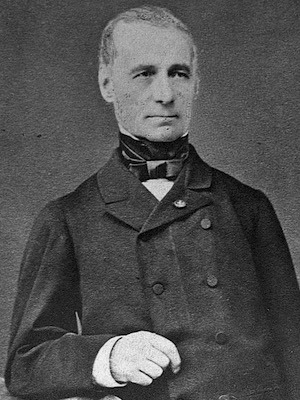Jean-Baptiste Bouillaud
Jean-Baptiste Bouillaud (1796 – 1881) was a French physician.
Bouillaud was active in various fields of medicine including localization of the language function; multiple publications on cardiology; and publications on hermaphroditism, cholera, encephalitis, cancer, and various forms of fever.
Bouillaud pointed out the relevance of the stethoscope relevance for examining the heart (1819) and differentiated different types of valvular heart diseases through auscultation. He identified the bruit de diable (venous hum over right internal jugular vein); bruit de rappel; and faux pas du coeur (weak heart beat and absent peripheral pulse). He coined the terms endocardium (endocarde) and endocarditis (endocardite)
Biography
- Born 16 September in Bragette, France
- 1814 – Commenced medical studies in Paris, but did not enjoy the sight of operations, so quit and enlisted as a hussar with Napoleon Bonaparte…7 months later Napoleon was defeated at Waterloo (June 1815) and so Bouillaud resumed his medical studies in Paris.
- 1816 – Student of Guillaume Dupuytren (1777–1835) and François Magendie (1783–1855).
- 1823 – MD with thesis Essai sur le diagnostic des anévrismes de l’aorte
- 1824 – Published Traité des maladies du coeur et des gros vaisseaux with his boss René-Joseph Hyacinthe Bertin (1757–1828) at the Hôpital Cochin
- Professor Hôpital de la Charité and Hôpital de la Pitie, Paris
- 1831 – Founding member of Société Phrénologique de Paris
- 1842-1846 Brief sojourn into politics as a deputy for Angoulême and a member of the Liberal Opposition
- 1848 – Dean, Paris Faculty of Medicine
- 1862 – President, Académie Nationale de Médecine
- 1867 – President, First Congrès médical international de Paris
- 1868 – Member of the Académie des Sciences and Commandeur dans l’ordre Legion d’Honneur
- Died 29 October in Paris, France
Medical Eponyms
Bouillaud disease (1835) (*aka acute rheumatic carditis)
Bouillaud Law of Coincidence (1836)
First described in 1836, translated to English in 1837 and expanded in 1840. Bouillaud determined that in the great majority of cases of acute generalized febrile articular rheumatism, there exists a variable degree of rheumatism of the fibrous tissue of the heart. This coincidence is the rule and the noncoincidence is the exception.
Determination of the Law of Coincidence of Endocarditis and Pericarditis, or of Inflammation of the Internal and External Sero-fibrous Tissues of the Heart with Acute Articular Rheumatism
Bouillaud 1836: 12
Bouillaud sign (1846)
Depression or persistent retraction of the precordium caused by adhesive pericarditis
Chez six ou sept sujets, nous avons annoncé l’existence d’une adhérence intime et générale du péricarde aux signes suivants:
1) Dépression évidente de la région précordiale, dépression qui est l’analogue de celle qu’on observe dans un des côtés de la poitrine à la suite d une pleuresie également terminée par adhésion. Cette sorte de rétrécissement de la région précordiale me parait aujourd’hui un signe d’une haute importante.
2) La main et l’oreille appliquées sur la région précordiale font reconnaître que le cœur ne se ment pas, ne joue pas aussi librement qu’à l’état normal dans la cavité qui le contient; ses battements sont en quelque sorte embarrassés bridés, et la pointe ne frappe plus la poitrine par un coup net et bien détaché.
Bouillaud [Tome I: 415-416]
In six or seven subjects, we have announced the existence of an intimate and general adhesion of the pericardium to the following signs:
1) evident depression of the precordial region, depression which is analogous to that observed in one of the sides of the chest as a result of pleurisy also terminated by adhesion. This sort of narrowing of the precordial region seems to me today a sign of high importance.
2) If the hand and ear are applied to the precordial region, one recognizes that the heart does not move as freely as it does in the normal state; its beats are somewhat impeded and the apex of the heart does not strike the chest wall as usual with a sharp and distinctive force.
Bouillaud [Tome I: 415-416]
Bouillaud references Dr James Sanders, and like Hope and Laennec before him, had been unable to observe the sign in adherent pericarditis
M. le docteur Sander(s) a donné comme signe de l’adhérence du péricarde au cœur un signe que je n’ai pas eu l’occasion de constater: “un mouvement perpétuel d’une très forte ondulation se montrant plus bas que celle que l’on sent naturellement dans la région du cœur”
Bouillaud. Traité de nosographie médicale. 1846; I: 416
Doctor Sander(s) gave as a sign of the adherence of the pericardium to the heart a sign that I have not had the opportunity to observe: “a perpetual movement of a very strong undulation showing itself lower than the one we naturally feel in the region of the heart “
[Tome I: 416]
Key Medical Attributions
Cardiology:
- Bouillaud pointed out the relevance of the stethoscope relevance for examining the heart (1819) and differentiated different types of valvular heart diseases through auscultation. He identified the bruit de diable (venous hum over right internal jugular vein); bruit de rappel; and faux pas du coeur (weak heart beat and absent peripheral pulse)
- Described in detail various congenital cardiac diseases that he associated with either developmental arrest or foetal endocarditis
- Identified the tympanic sound heard on percussing the chest above the level of a pleural effusion (later reported by and eponymously named Škodaic ressonance)
Neurology
- 1827: Bouillaud observed that patients with cerebellar lesions had difficulty with posture and stance
Controversies
Major Publications
- Bouillaud J. Essai sur le diagnostic des anévrismes de l’aorte. Thèses du 19e siècle. 1823
- Bouillaud J. Traité clinique et physiologique de l’encéphalite, ou inflammation du cerveau, et de ses suites. 1825
- Bouillaud J. Recherches cliniques tendant a refuter l’opinion de M. Gall sur lefonction du cervelet. Archives Générale de Médecine. 1827; 15: 225-247
- Bouillaud J. Traité clinique et expérimental des fièvres dites essentielles. 1826
- Bouillaud J. Traite ṕratique, théorique et statistique du choleŕa-morbus de Paris. 1832
- Bouillaud J. Exposition raisonnée d’un cas de nouvelle et singulière variéte d’hermaphrodisme observée chez l’homme. 1833
- Bouillaud J. Traité clinique des maladies du coeur. Volume I. 1835
- Bouillaud J. Traité clinique des maladies du coeur. Volume II 1835 [Endocarditis: pp170-204] [Bouillaud’s disease: Observation 84 pp 237-241]
- Bouillaud J. New researches on acute articular rheumatism in general: and especially on the law of coincidence of pericarditis and endocarditis with this disease, as well as on the efficacy of the method of treating it by repeated bloodlettings at short intervals. 1837 [Bouillaud law of coincidence]
- Bouillaud J. Traité clinique du rhumatisme articulaire: et de la loi de coïncidence des inflammations du coeur avec cette maladie. 1840
- Bouillaud JB.Traité de nosographie médicale. Tome I, Tome II, Tome III, Tome IV, Tome V. 1846 [Bouillaud sign: De la péricardite ou de l’inflammation du péricarde, et de ses suites. Caractères anatomiques. Tome I: 405–17]
References
- Rolleston JD. Jean Baptiste Bouillaud (1796-1881). A Pioneer in Cardiology and Neurology. Proceedings of the Royal Society of Medicine. 1931; 24(9): 1253–1262.
- Poynter FN. Doctors in The Human Comedy. JAMA 1968; 204(1): 7-10
- Silverman BD. Jean Baptiste Bouillaud. Clinical Cardiology. 1996; 19(10): 836–7
- Kaiser H, Keitel W. Jean-Baptiste Bouillaud (1796-1881) – rheumatologist, cardiologist and more. Zeitschrift für Rheumatologie 2007; 66: 65–71
- Melling P, Brunia K. Who was the Red Dean? J Hist Neurosci 2016; 26(1); 111-118.
- Ye F et al. Physical Examination Signs of Inspection and Medical Eponyms in Pericarditis Part I: 1761 to 1852. Erclyes Med J 2019; 41(2): 223–229

eponym
the person behind the name

